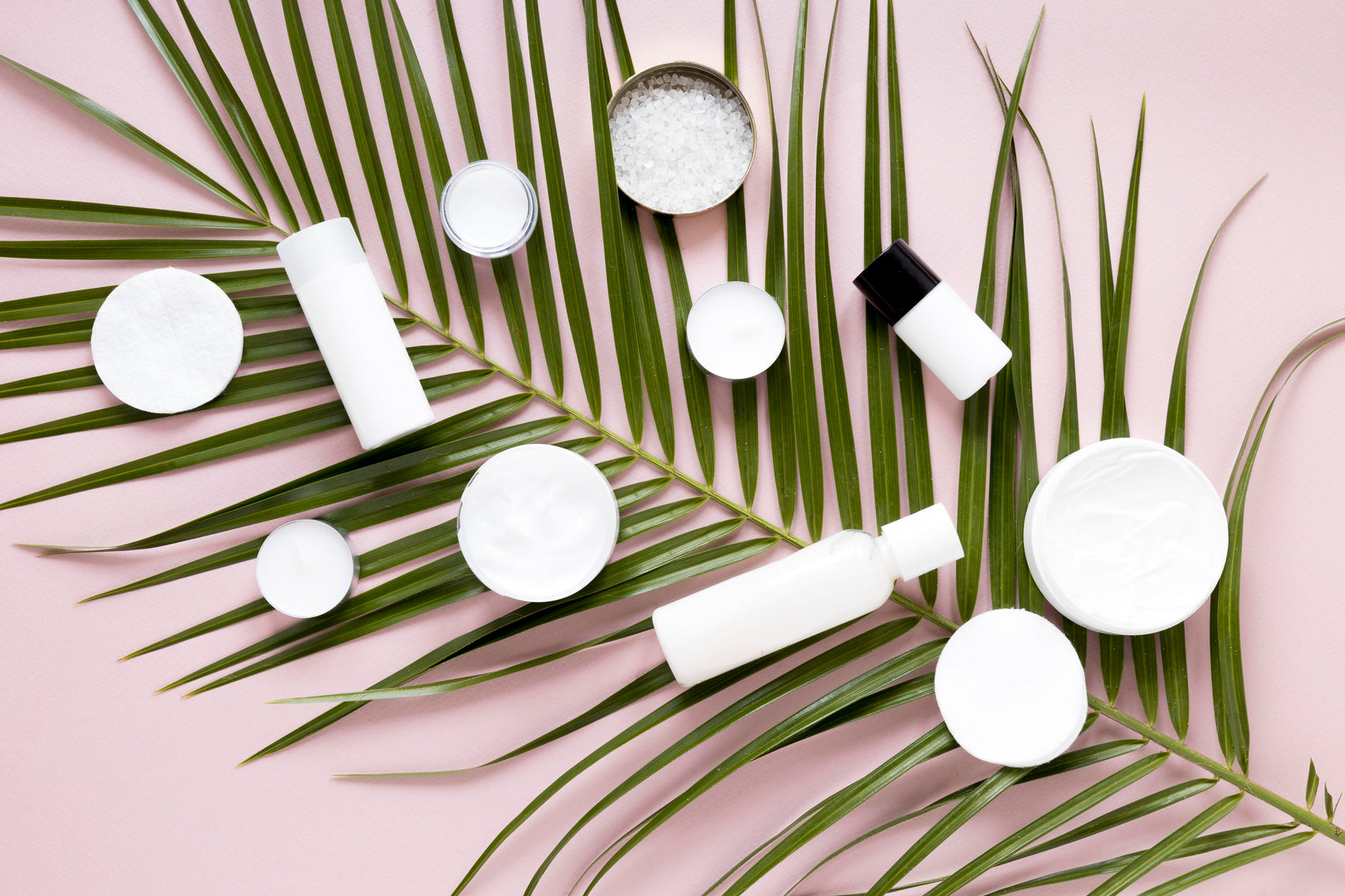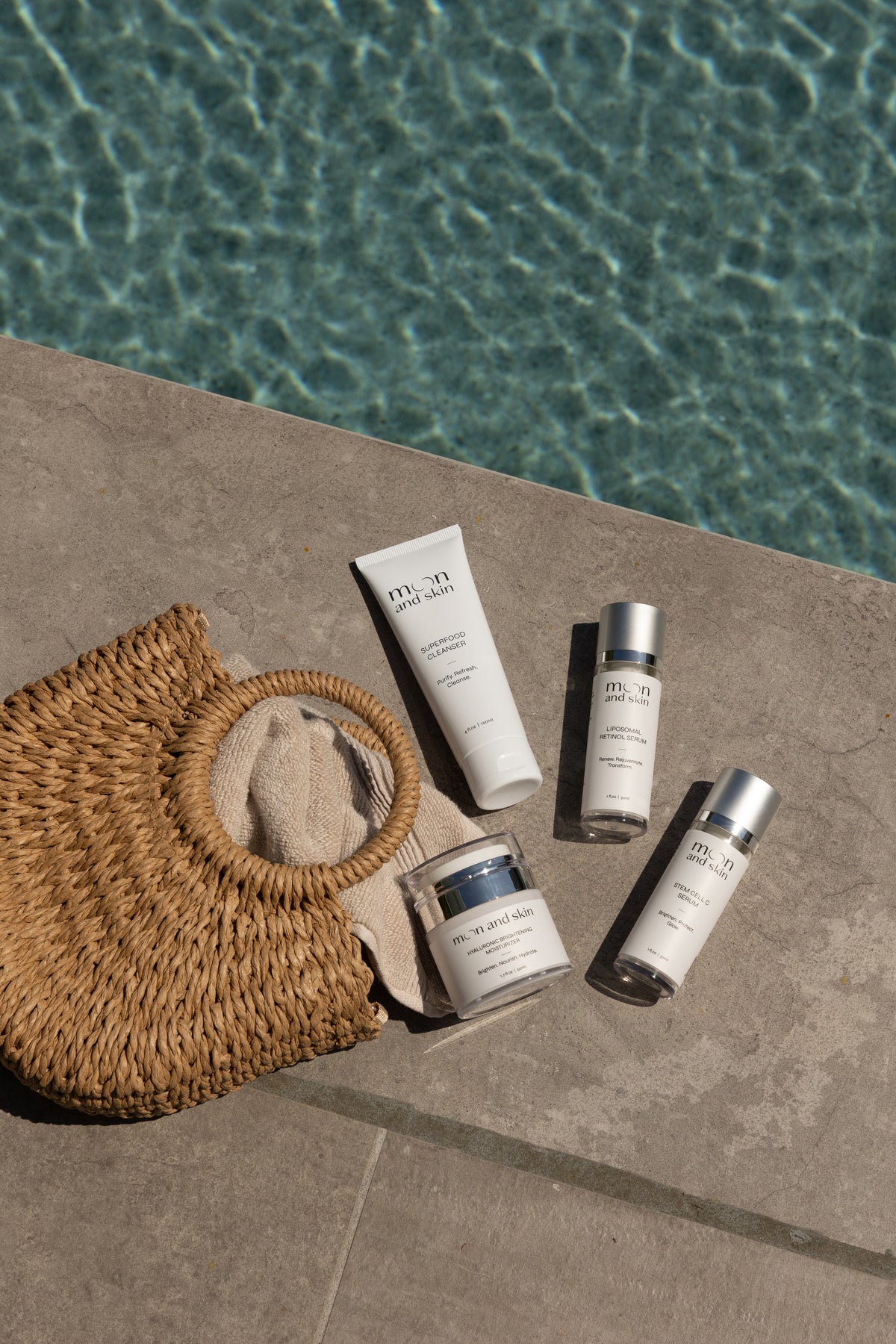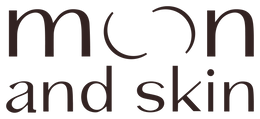Table of Contents
Introduction
Have you recently started using retinol and noticed your skin looking a bit worse for wear? You’re not alone. Many of us embark on the retinol journey with high hopes of achieving smoother, younger-looking skin, only to be met with dryness, redness, and yes, peeling. This phenomenon can be disheartening, leading to questions like, "Does retinol cause skin peeling?"
At Moon and Skin, we understand that navigating the world of skincare can be both exciting and intimidating. Our mission is to provide clean, thoughtful skincare that supports your skin through every phase of life. Today, we’ll explore the relationship between retinol and skin peeling, the reasons behind it, and how to manage it effectively, so you can embrace the journey to radiant skin with confidence.
The Relevance of the Topic
Retinol, a derivative of vitamin A, is renowned for its ability to promote cell turnover, improve skin texture, and diminish the appearance of fine lines and wrinkles. However, the adjustment period—often marked by irritation and peeling—can deter many users from reaping its benefits. Understanding why this occurs and how to manage it is essential for anyone looking to incorporate retinol into their skincare routine.
In this blog post, we’ll cover:
- What retinol is and how it works.
- Why retinol can cause skin peeling.
- How to minimize and manage skin peeling when using retinol.
- Tips for establishing a successful retinol routine.
- The importance of hydration and complementary products.
Together, we'll empower you with the knowledge to navigate your retinol journey effectively.
What is Retinol?
Before diving deeper, let's clarify what retinol is and its benefits for the skin. Retinol is a member of the retinoid family, which includes both over-the-counter products and prescription-strength options like tretinoin. It works by accelerating skin cell turnover, meaning it encourages the shedding of old skin cells and the emergence of new ones.
Benefits of Retinol
- Reduces Fine Lines and Wrinkles: By stimulating collagen production, retinol helps to plump the skin and reduce the appearance of fine lines.
- Improves Skin Texture: Regular use can lead to smoother skin and a more even tone.
- Fights Acne: Retinol can prevent clogged pores and reduce breakouts, making it an excellent choice for acne-prone skin.
- Diminishes Discoloration: It can help fade dark spots and hyperpigmentation, resulting in a more uniform complexion.
While the benefits are clear, they come with a caveat: many users experience skin peeling, especially during the initial weeks of use.
Why Does Retinol Cause Skin Peeling?
1. Increased Cell Turnover
The primary reason retinol causes skin peeling is its effect on cell turnover. When you start using retinol, your skin begins to shed dead skin cells at a faster rate. This rapid turnover can lead to flaking and peeling as the outer layer of skin sheds to make way for new cells. This process, known as retinization, can last anywhere from a few weeks to a few months, depending on your skin's sensitivity and how frequently you apply retinol.
2. Skin Sensitivity
Retinol can increase skin sensitivity, especially in the initial stages of use. This heightened sensitivity may result in redness and irritation, which can contribute to peeling. If you're using a higher concentration of retinol or applying it too frequently, these symptoms may be exacerbated.
3. Environmental Factors
External factors such as weather changes, humidity levels, and exposure to sun can influence how your skin reacts to retinol. For instance, dry, cold air can exacerbate skin dryness and irritation, leading to more noticeable peeling.
4. Combination with Other Products
Using retinol in conjunction with other active ingredients (such as AHAs, BHAs, or vitamin C) can compound irritation and increase the likelihood of peeling. If you’re incorporating multiple actives into your routine, it’s crucial to do so thoughtfully and to monitor your skin’s reaction.
5. Inadequate Moisturization
The importance of hydration cannot be overstated when using retinol. If your skin is not adequately moisturized, it can lead to excessive dryness and peeling. This is where our Hyaluronic Brightening Moisturizer comes in—formulated with hyaluronic acid to deeply hydrate and support your skin through the adjustment process.
Summary of Key Takeaways
- Retinol increases skin cell turnover, leading to potential peeling.
- Sensitivity and environmental factors can exacerbate irritation.
- Combining retinol with other actives requires caution to avoid further irritation.
- Moisturization is essential for minimizing peeling and maintaining skin health.
Managing and Minimizing Skin Peeling from Retinol
1. Start Slow
If you’re new to retinol, it’s crucial to start with a low concentration, such as 0.25% to 0.5%, and gradually increase your usage as your skin adjusts. We recommend using retinol 2-3 times a week initially, then slowly increasing the frequency based on your skin's tolerance.
2. Utilize Moisturizers Wisely
Using a rich, hydrating moisturizer can help offset the drying effects of retinol. Applying a moisturizer before or after your retinol can create a buffer, minimizing irritation and peeling. The Hyaluronic Brightening Moisturizer we offer is ideal for this purpose, as it hydrates while helping to brighten the skin.
3. Consider “Retinol Sandwiching”
The “retinol sandwich” method involves applying a layer of moisturizer before applying retinol, then following up with another layer of moisturizer afterward. This technique can help reduce irritation while still allowing you to benefit from the retinol treatment.
4. Avoid Harsh Products
During the adjustment period, it’s best to avoid using harsh scrubs, exfoliants, or other active ingredients that may further irritate your skin. Stick to a gentle cleanser like our Superfood Cleanser and simple, soothing products.
5. Stay Hydrated
Hydration is key for healthy skin, especially when using retinol. Drink plenty of water throughout the day to help maintain your skin’s moisture levels from within.
6. Sun Protection is a Must
Retinol can make your skin more sensitive to sunlight, so applying a broad-spectrum sunscreen with at least SPF 30 every day is essential. This step is crucial to protect your skin and prevent further irritation.
Summary of Key Takeaways
- Start with low concentrations and gradually increase use.
- Use a moisturizer before and after retinol to buffer irritation.
- Consider retinol sandwiching to mitigate dryness.
- Avoid harsh products and stick to gentle cleansers.
- Stay hydrated and protect your skin with sunscreen.
The Importance of a Holistic Skincare Routine
A successful skincare routine encompasses more than just the application of active ingredients. It’s about creating a balanced approach that supports your skin's health and resilience. Here are a few components to consider integrating into your routine:
1. Cleansing
Start with a gentle cleanser that nourishes your skin without stripping it of its natural oils. Our Superfood Cleanser is formulated with HydroProtein Technology to gently cleanse while deeply nourishing the skin.
2. Hydration
Incorporate hydrating products into your routine to prevent dryness. Our Hyaluronic Brightening Moisturizer combines hyaluronic acid and kojic acid to provide intense hydration while brightening your complexion.
3. Active Ingredients
If you want to incorporate other actives, consider waiting until your skin has adjusted to retinol. Once you feel comfortable, introduce ingredients like vitamin C or AHAs gradually, focusing on how your skin reacts.
4. Consistency
Consistency is key when it comes to skincare. Establish a routine that works for you and stick with it, allowing your skin time to adapt and reap the benefits of your products.
Conclusion
Navigating the world of retinol can be challenging, especially with the potential for skin peeling during the initial stages. However, understanding the reasons behind this common side effect and how to manage it effectively can empower you to embrace your skin journey with confidence. By starting slow, prioritizing hydration, and being mindful of your skincare routine, you can enjoy the myriad benefits that retinol has to offer.
At Moon and Skin, we are committed to supporting you through every phase of your skincare journey. For those ready to enhance their routine, we invite you to explore our Bundle & Save collection, which features our core products designed to work harmoniously together for optimal results.
FAQ
1. How long does retinol peeling last? Peeling can last anywhere from a few weeks to a few months as your skin adjusts. If peeling persists beyond this, consider consulting a dermatologist.
2. Can I use retinol if I have sensitive skin? Yes, but it’s essential to start with a low concentration and gradually increase usage. Monitor your skin's reaction closely.
3. What should I do if my skin is peeling excessively? If you're experiencing severe peeling or irritation, consider reducing the frequency of use or pausing retinol until your skin recovers.
4. Do I need to use sunscreen while using retinol? Absolutely! Retinol increases sun sensitivity, so daily use of broad-spectrum sunscreen is crucial.
5. Can I use retinol with other active ingredients? It’s best to avoid combining retinol with other actives until your skin has adjusted. Once comfortable, introduce other ingredients slowly.
With the right approach, you can enjoy the transformative benefits of retinol while minimizing any discomfort. Let's embark on this journey together!







